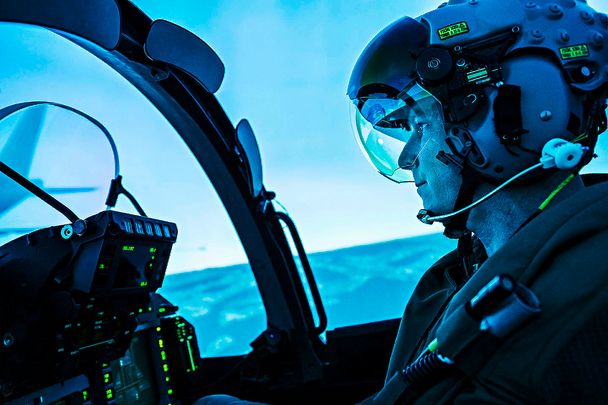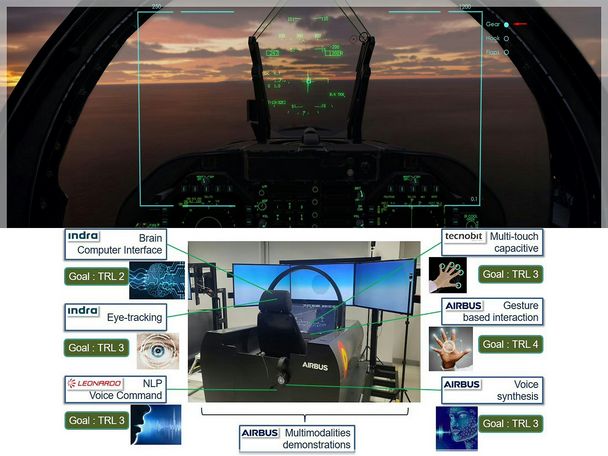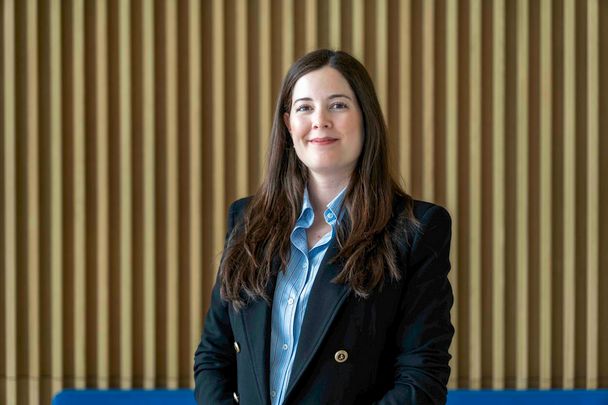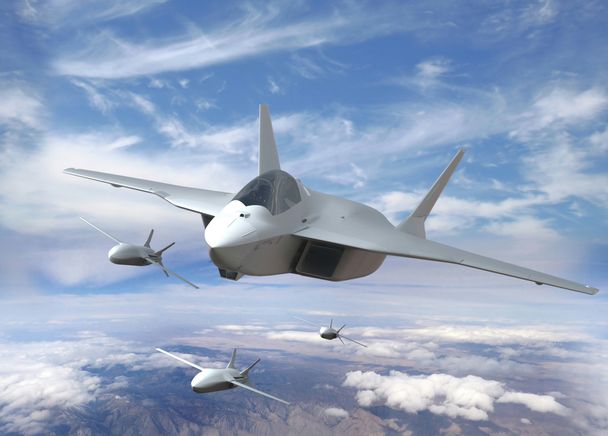Airbus and European innovation - Imagining a future combat aircraft cockpit

The multinational EPIIC programme, involving Airbus Defence and Space, is exploring multiple exciting innovations to strengthen Europe's defence capabilities and technological sovereignty.
Imagine Tony Stark soaring through the skies in his iconic Iron Man suit, each command answered with a seamless blend of futuristic technology.
Now imagine the cockpit of tomorrow's fighter jet.
It’s a high-tech arena where pilots will use adaptive human-machine interfaces and immersive displays. A digital assistant provides timely updates, while a helmet-mounted system projects critical and mission information into the pilot's field of vision. Gesture control allows him to acknowledge an update from ground control and order tasks to an unmanned platform, among other things. In addition, the vibration of the control stick gives the pilot an intuitive sense of the engine speed and flight conditions. This fusion of technologies creates a smooth, responsive experience that mirrors the magic of Stark's suit.
This isn't just a flight of fancy. The journey to the cockpit of the future begins with discreet steps and by several different means. One is through the hands and eyes of Airbus Defence and Space test flight pilots. Today one of them, José Ramón Asensi Miralles, is in the Future Air Capabilities Prototyping Lab at Airbus' facilities in Getafe, Madrid. The test pilot is testing a goggles-based solution that recognises the pilot's gestures to interact with various systems in a fighter cockpit environment.

José Ramón Asensi Miralles, Airbus Defence and Space test flight pilot at the Airbus facilities in Getafe, Madrid.
Indigenous R&D for European technological sovereignty
Today's tests are part of the Enhanced Pilot Interfaces & Interactions for Fighter Cockpit (EPIIC) project, supported by the European Defence Fund (EDF). Airbus is a key participant. The project aims to future-proof Europe's defence capabilities by providing pilots the tools they need to optimise their work in the cockpit during military air operations.
Coordinated by Thales, EPIIC explores technologies such as virtual assistant, adaptive human-machine interface, large area displays and helmet-mounted displays, and cockpit interactions. These innovations are at an early stage of technology readiness, and are platform-agnostic: technologies ready for any next-generation European fighter.
Airbus is leading EPIIC’s innovative interaction modalities pillar. “This ranges from the use of voice commands and voice synthesis to gesture-based interactions and eye tracking. Every new feature must facilitate and empower the pilot," says Belén Calleja, project manager for three EDF programmes at Airbus Defence and Space.
Enhancing situational awareness for faster responses
The test pilot explains that the goal of today’s tests is “to validate the development of a system that recognises gestures such as hand movements without using traditional buttons or switches.”
But as he says, these interactions won't replace the use of the traditional control stick and throttles that control military fighters. "There is a philosophy behind it: HOTAS,” he says. “Cockpit design reflects how pilots have their Hands On Throttles and Stick as much as possible, so as not to interfere with flight. We’re looking at how acceptable it is for the aircraft to talk to pilots, or pilots to talk to the aircraft's systems. It makes sense, for example, to accept a frequency change from the controller with a voice or a gesture, rather than manually entering the digits.”
"Innovative interactions in the cockpit could optimise reactions and pilot situational awareness. This could lead to better decision making. But we need to be smart about how we apply these technologies”
Marcos Barquero, test pilot, Airbus Defence and Space

Within the EPIIC programme, Airbus is leading the innovative interactions pillar in collaboration with Leonardo, Indra and Technobit in Spain.
Using AI to innovate in defence
EPIIC is a consortium of 27 European companies and academic partners: an innovation eco-system for a strategically autonomous European defence sector. "It is about helping European armed forces to remain agile and technologically superior in increasingly complex theatres of operation," stresses project manager Calleja.

Belén Calleja, project manager for three EDF programmes at Airbus Defence and Space.
Building greater European technology autonomy means reducing reliance on third-party technologies, such as legacy avionics. To this end, Airbus is partnering with artificial intelligence solutions provider Multiverse Computing through an open innovation approach. This collaboration combines Airbus' expertise in pilot interfaces with Multiverse's expertise in building quantum machine learning algorithms and efficient large language models. "This will help us develop a more efficient pilot gesture recognition algorithm that uses less energy and power compared to conventional strategies, and reduces the demands on the processing unit," says Calleja.

Airbus is partnering with Spanish based SME Multiverse, which is developing a state-of-the-art gesture recognition algorithm inspired by quantum computing principles.
FCAS on the horizon
Airbus’ teams are already working on the project’s second phase. By the time it ends in 2026, EPIIC's most promising results will be considered for demonstration and testing. This will include potential validation in simulated and realistic operational environments.
As the EPIIC teams look to the future, the line between science fiction and reality blurs. The futuristic technologies that power Tony Stark's Iron Man suit - such as virtual assistants, adaptive interfaces and gesture control - could find their way into the cockpits of a next generation of fighter jets, such as the Future Combat Air System (FCAS) being developed by France, Germany and Spain. These technologies will help to build a strong and autonomous European defence. In Stark's own words: "It's not the suit, it's what you do with it".

In the FCAS system of systems, New Generation Fighters will work together with Unmanned Remote Carriers – all connected to other systems via a data cloud.
This publication was co-funded by the European Union under the Grant Agreement 101103592. Its contents are the sole responsibility of the EPIIC (Enhanced Pilot Interfaces & Interactions for fighter Cockpit) Consortium and do not necessarily reflect the views of the European Union.
